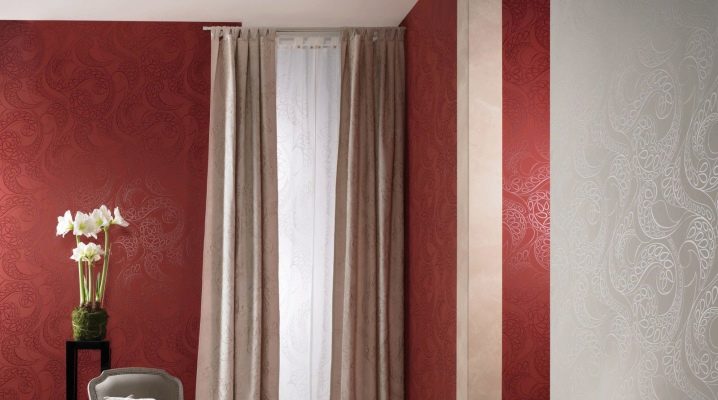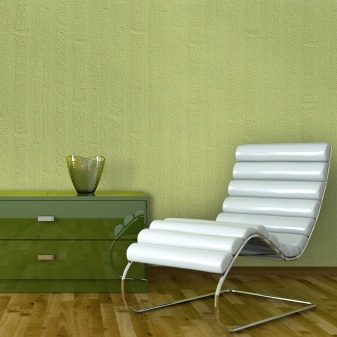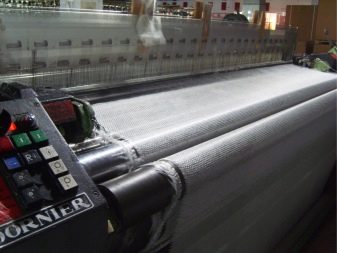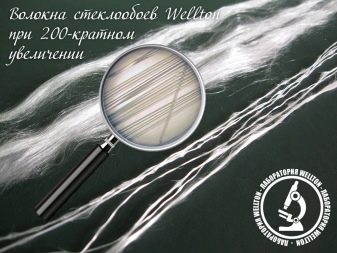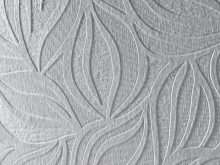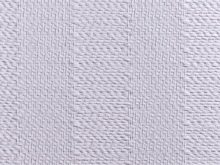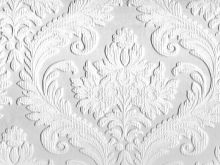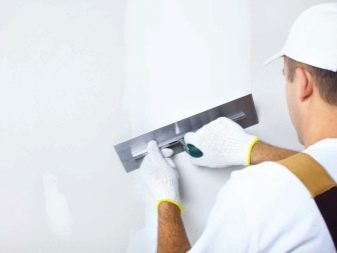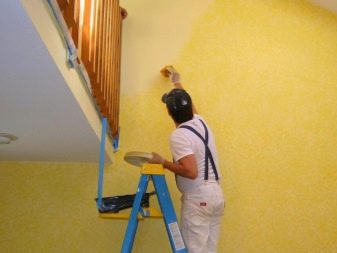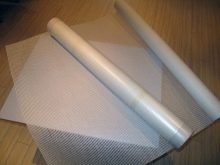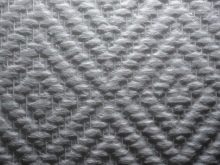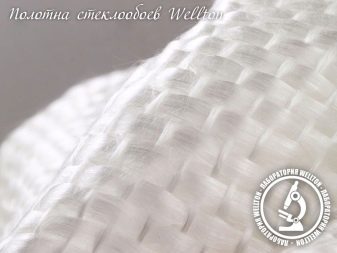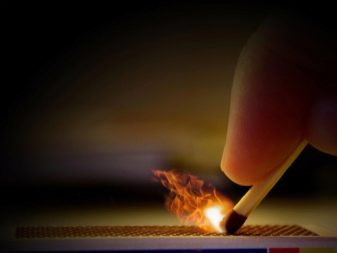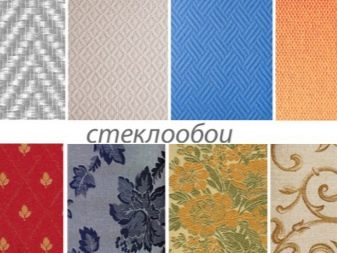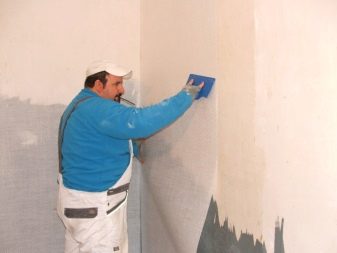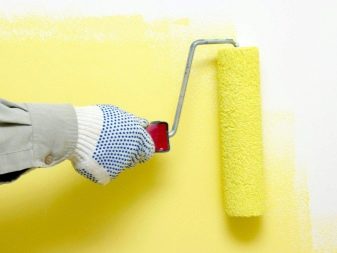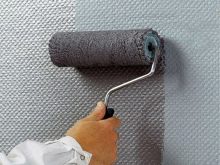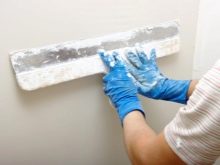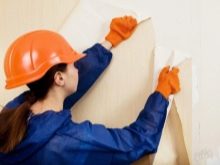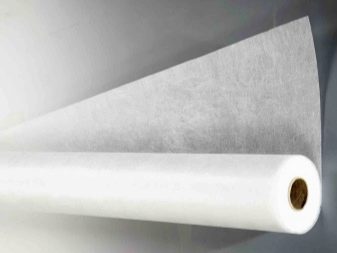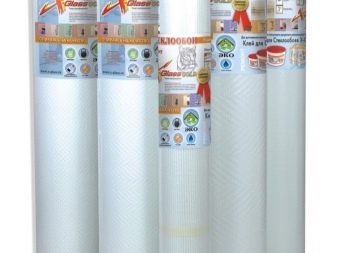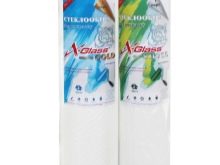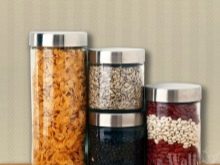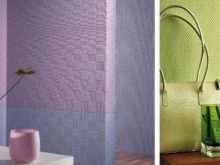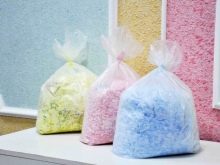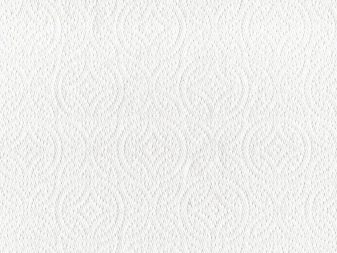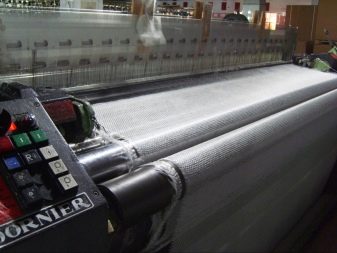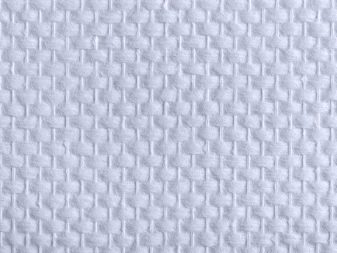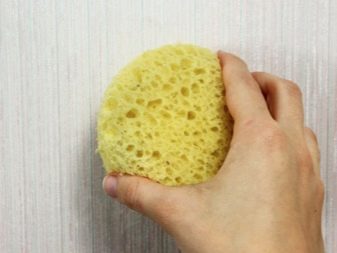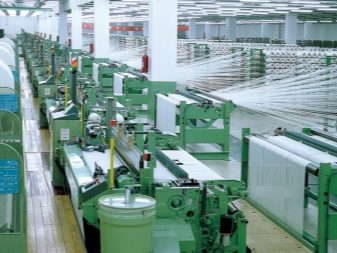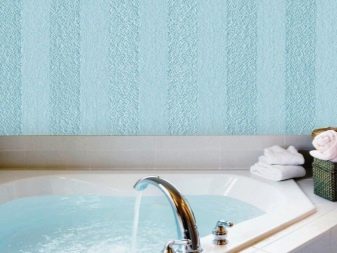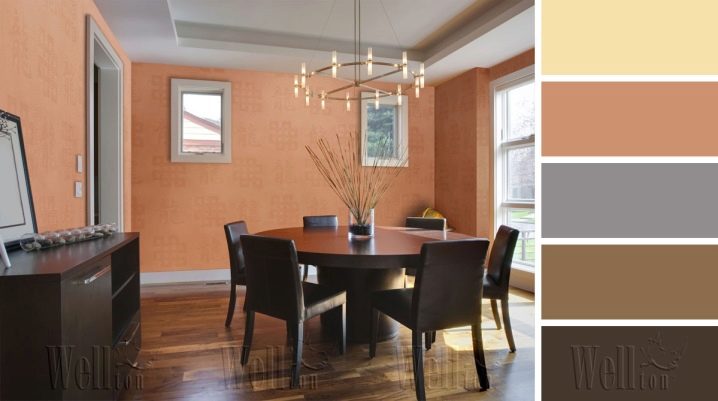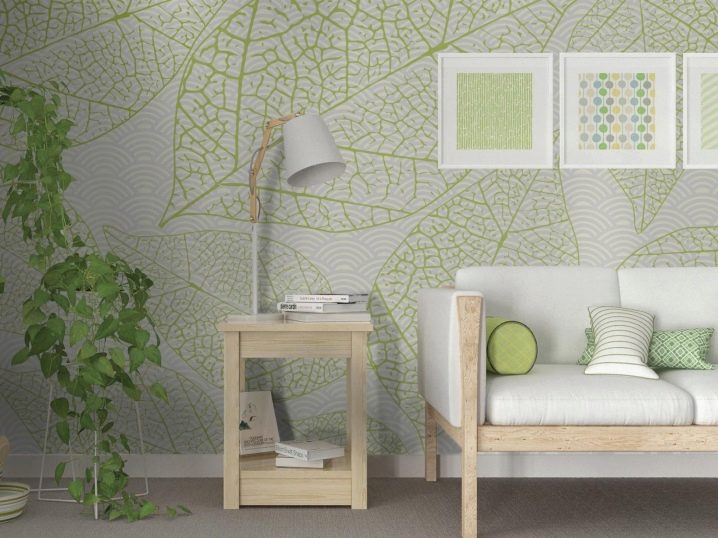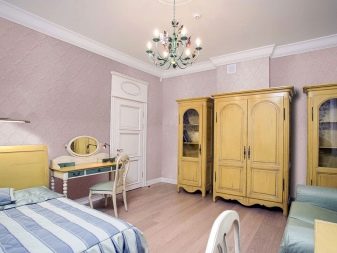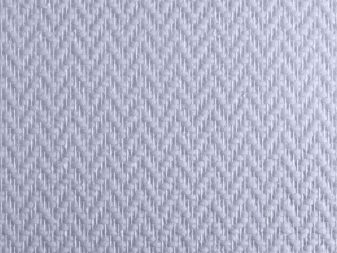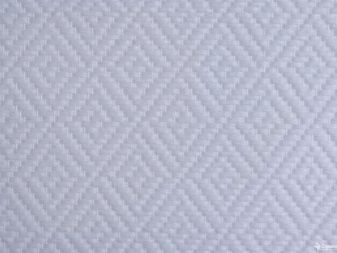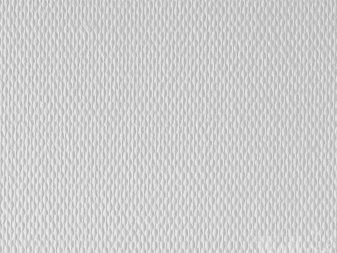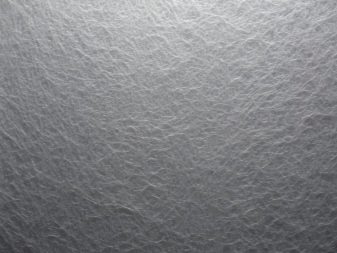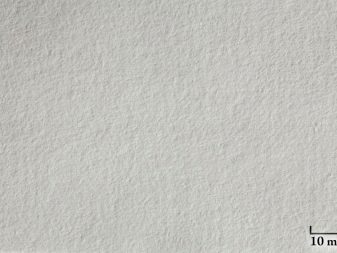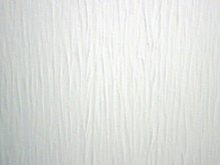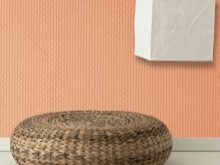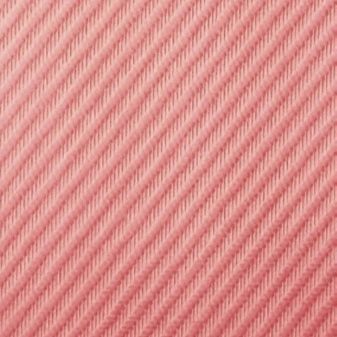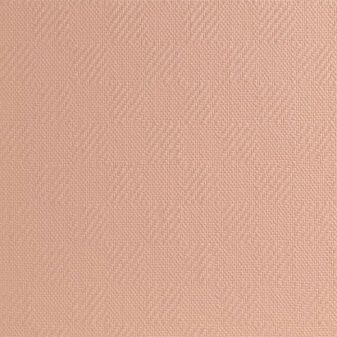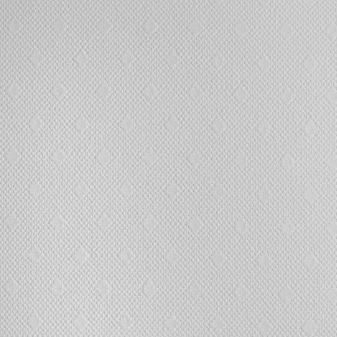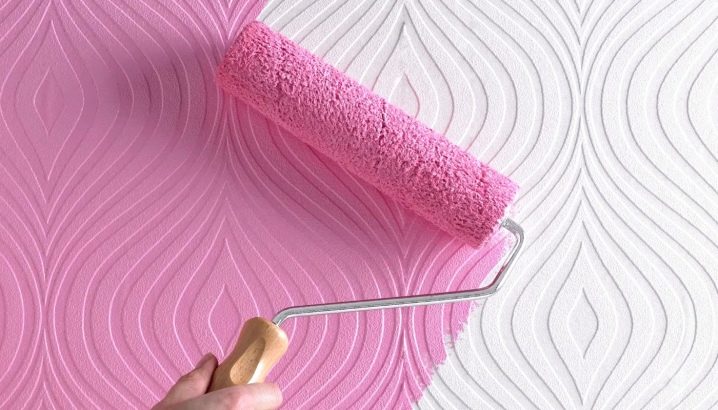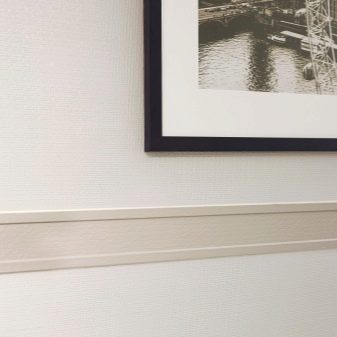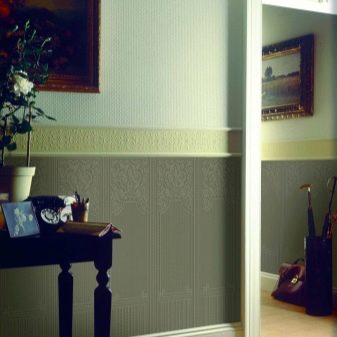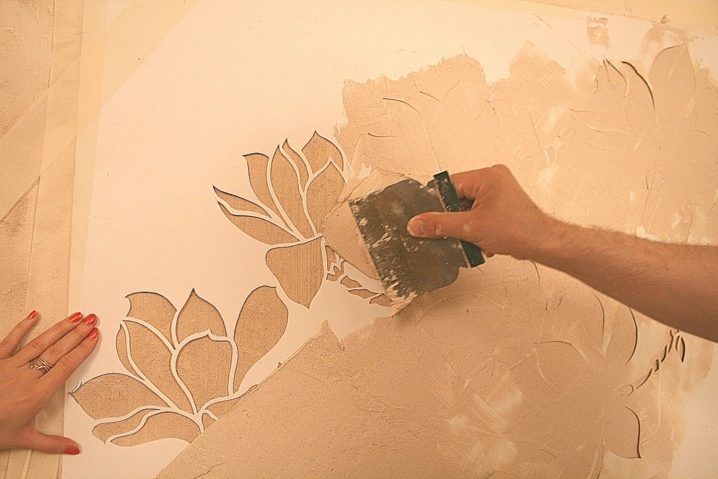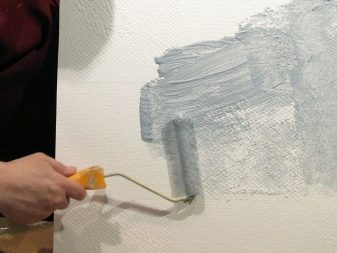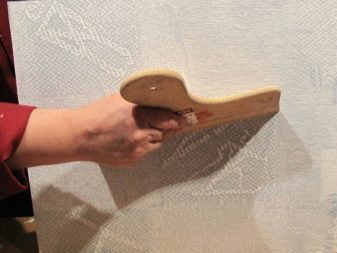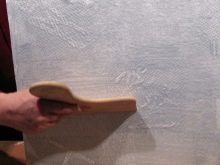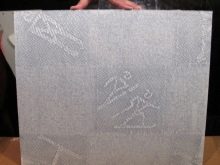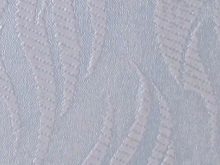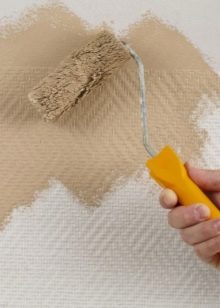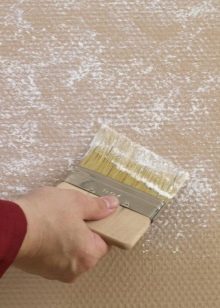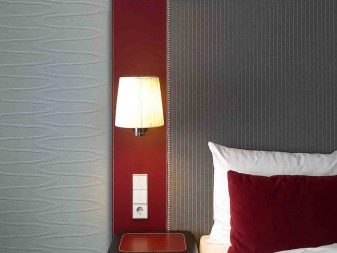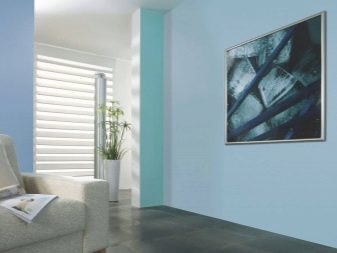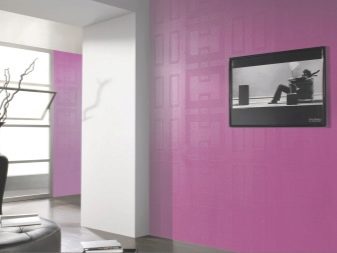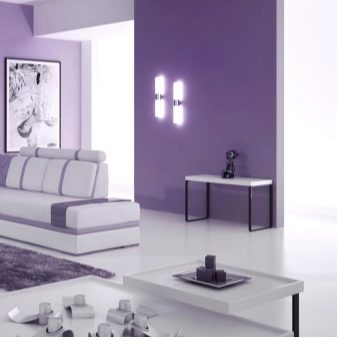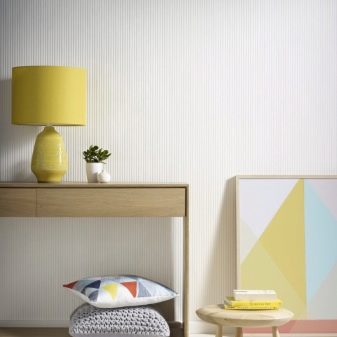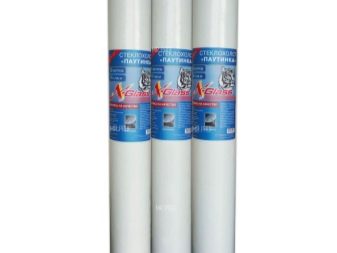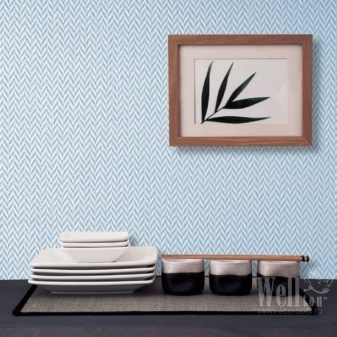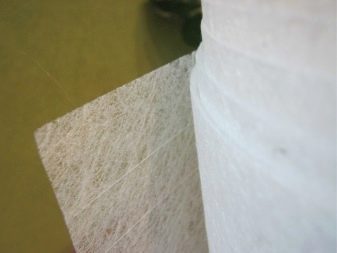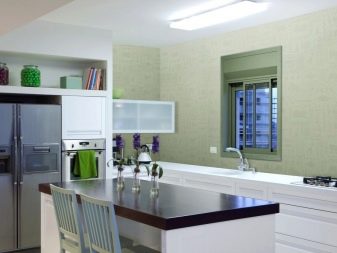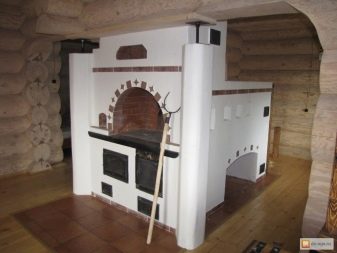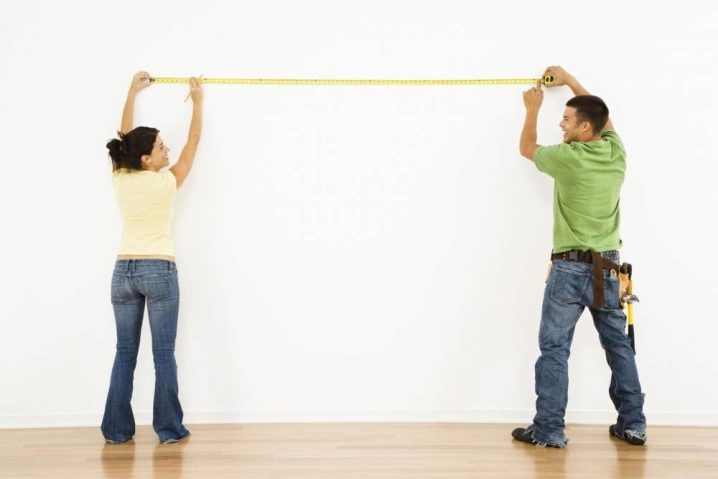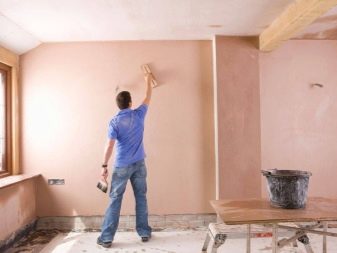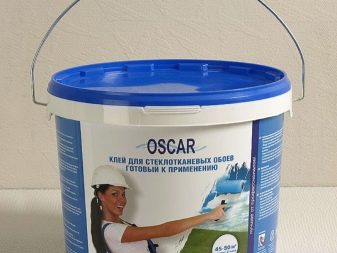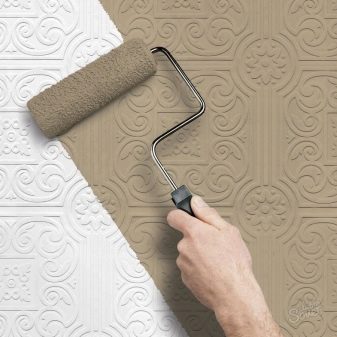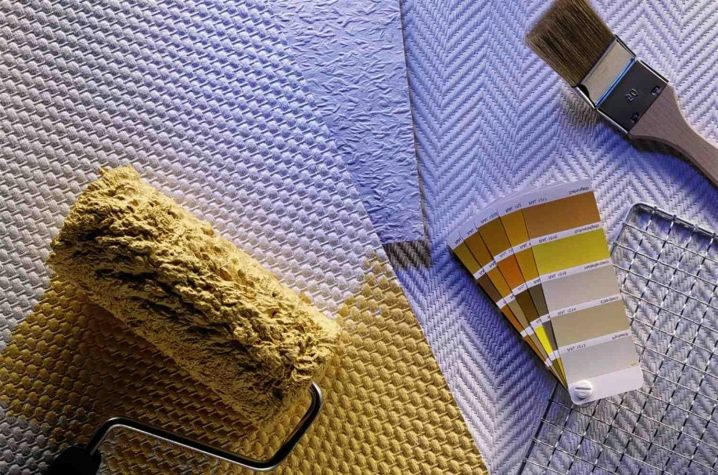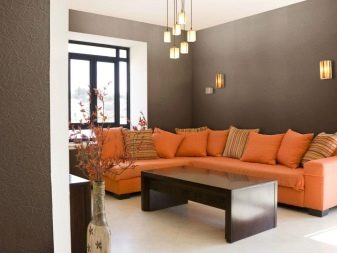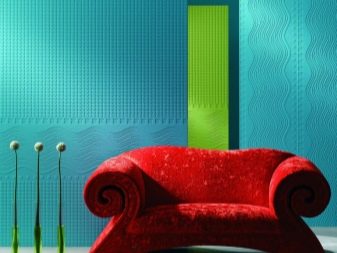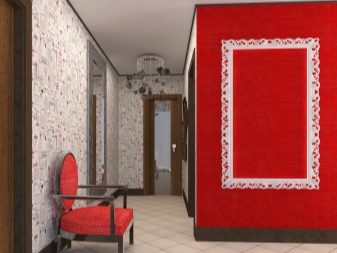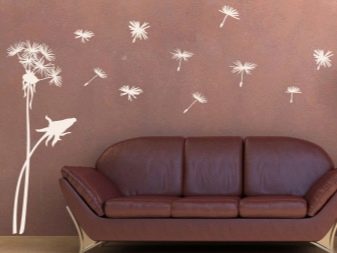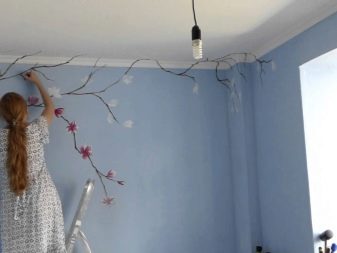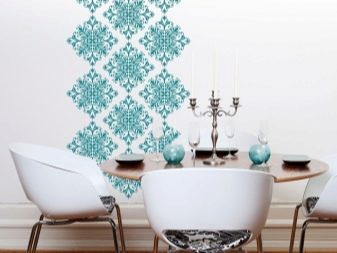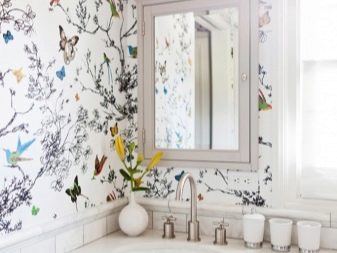Glass fiber: what is it and what are their features?
Currently, the market offers many materials for wall decoration. You can opt for paint, plaster, tile, wallpaper. One of the modern coatings that deserves attention is glass wall paper. They have a long service life, are ideal for painting, are represented by a wide range of colors and types and are very practical in operation. More and more buyers stop their choice on them.
Special features
Glass fiber is a decorative wall covering that is based on special glass. It is heated to high temperatures, and in this state the fibers are drawn to form yarn, which can be of different thickness and types. Yarn is subsequently woven into fabric.
Glass cloth wallpaper have the texture. Their front side looks like decorative weaving, which can be of various types: diamonds, leaves, geometric shapes, abstract lines, flowers.
Fiberglass wallpapers are suitable for pasting various surfaces: concrete, plastic, metal, wooden, plasterboard, brick, chipboard. Pre-wall is prepared - primed. If there are gaps, they must be repaired.
Thanks to glass fibers such wallpapers serve 20-30 years with proper use and care. They can be painted several times (up to 6 times) without affecting the appearance.
Currently, manufacturers are trying to produce fiberglass wallpaper with new features, for example, magnetic or with additional noise reduction.
Advantages and disadvantages
Like any finishing coating, glass fiber has several disadvantages and advantages that must be analyzed before making a choice in the store.
The advantages include several characteristics.
- Strength. The material is not torn, not deformed, not scratched. In addition, it is able to withstand wet cleaning,including - with the use of chemical cleaners. It is believed that this is the most durable wall covering that exists today.
- Improving indoor climate. The structure of the wallpaper resembles a knitted product - it consists of loops, which allows water vapor to move freely between them. Due to this, dust is not attracted to the wallpaper, static electricity does not accumulate.
- Environmentally friendly, safe for others. The basis of the coating is glass, which does not harm people and does not allow dangerous microorganisms to multiply. These wallpapers are an excellent prevention of fungus or mold, so the glass is not harmful to the health of others, suitable for decorating rooms for children and people prone to allergies.
- Resistant to mechanical damage. The canvas is not deformed in contact with furniture, by human hands. If it became necessary to replace a separate fragment, this can be done without difficulty; horizontal gluing can be used with a glass cloth.
- Incombustible. Thanks to the glass in the composition of the material, the wallpaper does not burn and does not emit harmful substances in contact with fire.
- Simplicity when pasting walls. No special skills are required when working with fiberglass wallpaper. They are easy to stick on their own without the invitation of a specialist.
- Long service life. With proper care and maintenance wallpaper can last up to 30 years.
- Presented by a wide range various types of flowers, textures, patterns.
As disadvantages of glass cloth can be called other features.
- Cost The price of the canvas can reach large sizes, depending on the complexity of the texture and image.
- In the process of pasting walls, you must use special protective clothing. Microparticles of wallpaper in contact with the skin can cause severe irritation and allergies.
- To paint the wall, covered with glass cloth, you need a large amount of paint due to the high degree of absorption of wallpaper.
- When applying several layers of paint and glue, the wallpaper can start to peel off from the wall under the action of gravity.
- With each new layer of paint, the texture and relief of the wallpaper is lost.
- When the paint is not properly selected, the wallpaper may not be easily cleaned by wet cleaning.
- Wallpapers are difficult to remove from the walls.In subsequent repairs, you need to make a lot of effort to prepare the wall for a new coating.
- To work with them, a perfectly flat wall is required, because the glass fiber bends poorly and cannot take any form.
Despite several drawbacks, glass murals are one of the most popular types of wall covering material both in Russia and in European countries.
Kinds
Depending on various criteria, glass fiber can be of different types.
Texture
- Smooth Wall-paper represents "web" (fiberglass). They are the perfect surface for painting. In addition, the “cobweb” can smooth out small cracks and irregularities on the wall. It combines a reinforcing and decorative function.
- Relief. Such a material has a more porous structure, greater weight and density. It is less susceptible to stretching and deformations and is well suited for the final completion of wall finishing.
Quality
- First grade. They have high quality, long service life, very dense - from 100 g / sq. m. The price of such a material is high.
- Second grade. Quality at an average level, during operation can behave unpredictably.If you choose products of well-known foreign brands, the wallpaper will be of sufficiently high quality. The second grade will only indicate a non-standard length of the canvas.
- Economy grade. Low quality wallpaper with a short lifespan and low density. Despite this, are the most popular option among buyers because of the acceptable cost.
Number of layers
Single-layer and two-layer, consisting of a decorative layer and the substrate.
Method of use
Glass cloth wallpaper and "web" for further painting. The canvas has a white or light color and is intended for further processing. They are an excellent option for ceiling decoration. For the walls of such wallpaper is used only as a draft.
Fiberglass, which requires further filling. Suitable for uneven surfaces.
Glass fiber in different colors, not requiring further staining.
Liquid glass wallpaper. It is not recommended to use them in rooms with high humidity.
Colour
Multicolored and white or light with a slight tint. The latter are usually used for painting.
Picture
- Complicated. It is made on the jacquard machine.
- Textured. It is made on the loom.
Moisture resistance
- 1 degree. The material does not have high strength. You can use only dry cleaning with a chamois rag. Marked in one wave.
- 2 degrees. The average degree of moisture resistance, transfer cleaning with a slightly damp cloth, marked with two waves.
- 3 degrees. High degree of resistance to moisture. They can be applied wet cleaning, including the use of chemicals. Marked in three waves. In the case of adding a brush to the label, the wallpaper can be brushed. This is the highest degree of strength and moisture resistance of wallpaper.
Composition
For the manufacture of fiberglass are used only natural materials, so the finished wallpaper does not emit harmful substances and have a long service life. In addition to glass, dolomite, soda, clay, quartz sand and lime are included in the fabric.
At first, all components are molded into briquettes, which are subsequently pulled under the action of high temperature into threads. On weaving looms of weaving cloth. Then the cloth is impregnated with a special solution, the basis of which is modified starch.Thanks to this impregnation, at first the wallpaper keeps its shape before they are stuck on it, and then, mixing with glue and paint, is firmly fixed on the surface.
After that, all glass cloth wallpaper are thoroughly tested for compliance with GOST R 52805-2007.
Specifications
All characteristics of glass cloth meet the highest requirements.
- Environmental friendliness. All glass wall mills pass quality control, the concentration of harmful substances in their composition should not exceed the permissible norms, according to the SanPiN of the Russian Federation.
- Density. The higher this figure, the stronger the canvas, and the longer it will last. Good wallpapers have a high density - from 100 g / sq. m. They are durable and can tolerate several dyes. Lower density wallpapers are not as durable. They are not recommended to choose for residential premises, as often the canvas has a marriage - loose threads from weaving, knitted drawing.
- The size. Standard roll has a width of 1 m and a length of 25-50 m.
- Whiteness must be at least 70%.
- Vapor permeability This indicator should be measured by the manufacturer and indicated on the package.
- Edge parallelism. The longitudinal edges of the wallpaper should be parallel to each other. Deviation can not be more than 1 cm.
- Integrity.The canvas can not consist of composite fragments, it must be solid.
- Winding cloth. The material should be wound tightly, and the protrusion should not exceed 1% of the roll width. The front side must be wound out.
- The presence of mechanical damage. The material should not have tears, wrinkles and other damage.
- Flammability, flammability, toxicity at contact with fire, smoke formation. These indicators should not exceed the norms established by GOST 32044, 30402, 12.1.044.
- Impregnation with a special compound. Non-impregnated areas should not exceed 3 cm.
- Marking All wallpapers must be labeled in accordance with the requirements in an accessible form to consumers.
- Water resistance.
- Durability and resistance to mechanical stress.
Color solutions
In order to determine the color of the wallpaper, first of all it is necessary to be guided by your own taste preferences.
However, there are some general tips that will help make a choice.
- It is not recommended to choose too bright colors for coloring. They quickly get bored, can cause irritation, will impede rest and relaxation.It is better to give preference to neutral, calmer tones.
- If you want to highlight the walls in an original way, add bright colors to the interior, it is better to select them with separate elements, for example, with bright patterns on a neutral general background of wallpaper. This way you can achieve the originality of the room, as well as make it more visually.
- It is important to pay attention to the combination of wallpaper with furniture in the room. They should complement each other in color, patterns and style.
- If you plan to apply to glass fiber wallpaper, you need to comply with harmonious proportions depending on the size of the room. Large details contribute to the visual reduction of space, which is inappropriate in small rooms. Small picture, on the contrary, is suitable for a small room and will help to make it more spacious.
- It is important to keep in mind what purpose the room itself has, and how harmoniously the wallpaper in one or another color will look in it. For the kitchen, the colors should not be too bright, branded, gloomy. If it has enough natural light, you can choose cool shades: green, blue, gray. If you need to add light to the kitchen, it is better to give preference to warm colors: yellow,pink, orange.
- For living rooms suitable shades found in wildlife: green, pink, yellow. To add originality, you can use stencils to add color patterns to the walls to your taste. For the bedrooms are suitable soothing colors that will help to relax and rest: beige, blue, green, pink.
- With the help of various textures and colors, you can select one of the walls, divide the room into zones. An interesting solution - the choice for different walls of the same pattern, but different in size.
Invoices and patterns
Glass fiber can have a different texture. The most common are the following.
- "Herringbone" - a classic picture, suitable for decoration of any premises, can be of different sizes. A large herringbone will be an excellent option for a spacious room.
- "Rhombus". Suitable for connoisseurs of geometric shapes and straight lines. Such a picture will organically fit into the interior of the kitchen, dining room, corridor.
- "Gunny". Wallpapers have the same relief on both sides; they can be glued on horizontal and vertical surfaces. It happens small, medium and large "mat".This texture, in addition to decorative, also performs reinforcing functions. This option is very popular in office space.
- "Spider line" - classical, chaotic, abstract drawing. When applying paint, the texture becomes almost invisible, but not smooth, which makes it ideal for ceiling decoration. Wallpapers with this pattern do not need to fit.
There are exclusive models with an unusual texture.
- Drawing "crepe." The pattern resembles jacquard weaving with a randomly located small texture. If a layer of paint is applied to the wallpaper, they visually resemble a relief plaster, which creates a play of light and shadow on the surface.
- "Papyrus". It looks like ancient paper with ornaments, creates a unique atmosphere of comfort.
- The strips. These include patterns "Empire", "Modern" and "Stripe". All of them are beautiful crossing lanes. "Stripe" is suitable for people of the original, loving a unique interior. The pattern is an alternation of small and large bands.
- "Vertical". Texture - unobtrusive, restrained. Such wallpapers can be chosen to house any size and purpose.
- "Deriuzhka." Such a picture will organically fit into the country style, chalet, suitable for home on the summer cottage. Large relief resembles natural bamboo or linen weaving, like mats. Thanks to this, the room creates a comfortable and cozy atmosphere.
In addition to the above patterns, there are many options offered by manufacturers: "chess" and "quad", which is a combination of squares, "polka-dot", suitable for rooms with children, "diagonal", used in rooms where you need to visually correct the geometry of space.
The picture can be different in size, which gives a variety for creative ideas. When purchasing wallpaper for painting, it is necessary to take into account that with each new layer of paint the texture will gradually lose its relief, so it is more practical to choose a pronounced, deep texture.
With the help of various techniques of painting fiberglass wallpapers, you can diversify the interior, make it original.
- Application curbs. With them, you can divide the surface into several parts. The texture may be the same, but may differ on different sides of the border.After gluing the glass cloth wallpaper on the wall, without waiting for them to dry, you can proceed to the next step. On the canvas is cut a strip that will fit the future border. The remaining canvas on both sides of this strip is painted in two layers. An interesting solution - the use of contrasting colors. After the paint has dried, a curb is stuck in the space provided.
- Using stencils. With their help, you can create any drawings and patterns on the wall. A stencil is applied to the already painted wallpaper, its borders are fixed with masking tape. Then paint is carefully applied - so that it does not flow under the tape. Then the wallpaper is painted again, and after drying the layer of paint the adhesive tape is removed. The finished ornament can be additionally decorated or supplemented with another ornament with the help of another stencil. In this way, you can create drawings dispersed over the entire surface of the wall, or restrict yourself to a single pattern.
- Stencil staining. By means of it the effect of a fabric surface is created. To begin with, a glass cloth is painted with a base color, on top of which a paint and varnish coating of the same color spectrum is applied with it using a rubber or plastic trowel.Such staining can be carried out with a water-based varnish or with a metallic effect lacquer. After the top layer dries, its excess sponge is removed with a damp sponge.
- Coloring with azure. To do this, first put a base coat of paint in the form of a varnish of a mixture of contrasting colors with decorative splashes of white. After drying this layer is applied azure. To do this, use a special brush. Movement during the application of paint should be short, in the transverse direction. After 20 minutes with a rubber spatula, the flakes must be evenly distributed on the canvas. A brighter effect can be achieved by applying another layer of azure.
Product overview of popular brands
Based on feedback from satisfied customers, several leaders stand out among today's producers of glass cloth wallpaper, who produce quality products and are the most popular with consumers.
- Welton. The Swedish company is a team of professionals, one of the long-existing leaders in the production of glass gutters. Products of this brand can be found in all developed countries of the world.In addition to the wallpaper, the assortment of this brand includes all related products for their sticking. Glass fiber is represented by three collections: Classic, Optima, Decor. The first option is made at a factory in Sweden and can have a variety of texture, density, roll length. The second and third options are manufactured at a factory in China and have a lower cost.
- Vitrulan. The German company, which initially appeared on the market as a manufacturer of glass, and then - glass wool. Currently, the plant produces high quality glass wall paper and offers a wide selection of various collections for every taste.
- Nortex - Russia. The company has plants in China and the Czech Republic. The products are represented by a wide choice and are distinguished by affordable prices that are suitable for the Russian buyer.
- Tassoglass - America. High-quality products, suitable for the price of people of average living standards.
- X Glass - Russia, the plant is located in Finland and offers the average cost of products.
- Bau Master, Waltex, Veterman, Mermet - China. Wallpapers are of good quality and affordable prices.
How to choose?
Determining which wallpaper to buy, you can follow several tips.
- The main indicator of the quality of glass fiber is their density. You need to be careful, as sometimes unscrupulous manufacturers can add starch impregnation to increase this figure. At first glance, it is almost impossible to determine, because the wallpaper is packed in rolls. This can be noticeable only at the gluing stage, when glue is applied and the starch layer is dissolved. Therefore, the preference is better to give famous brands.
- Texture. This indicator can also be artificially modified. Some manufacturers fluff the threads, which makes the texture more voluminous. This is detected only in the process of gluing the fabric to the surface, when excess air is expelled with a spatula.
- You can determine in advance whether the material meets the stated characteristics. To do this, you can take a small piece of wallpaper as a sample, stick it on the wall, paint it and see if its properties have changed.
- Choosing paint, you need to understand how often the surface will be exposed to impacts, how often the cleaning will be carried out. It is better to give preference to latex gloss and semi-gloss paints.In rooms where people have high permeability, it is better to choose a paint with a waterproof effect that will not wear out.
- Choosing wallpaper on the ceiling, it is better to give preference to the cobweb, which has no relief and texture. In this case, you will not need to customize the picture. In addition, fiberglass has reinforcing properties that will make the surface perfectly smooth.
- For the ceiling, you can choose the material of the second grade. Such glass wall paper is lighter in weight, which simplifies the procedure for sticking them, and the ceiling is not exposed to frequent mechanical stress and rarely gets dirty, making it possible to save on material. Walls of the first grade with the best quality characteristics are better suited for walls. To determine the type of wallpaper, you need to pay attention to how many meters per roll. If 15 is a second-rate wallpaper, if 50 is the first.
- Fiberglass wallpaper can be chosen for any room. Due to their properties of strength, durability, and resistance to mechanical stress, they are suitable for rooms with large people: for a hallway, nursery or any other room. Resistant to frequent wet cleaning,including the use of chemicals, makes them an ideal coating for the walls of the kitchen and bathroom, and incombustibility and non-toxicity can be used as a decorative coating for the stove.
- To determine how much material is needed, you need to know the size of the surface in length and width. In addition, it should be borne in mind that the docking of the pattern will require 5-10 cm of allowance for each cut blade.
If the length of the whole roll is 50 m and the height of the ceilings is 2.5 m, it is necessary to expect that approximately 2 additional meters will be taken from each roll to allowances.
Instructions for use
Glass-cloth wallpaper can glue on wood, metal, concrete and brick surfaces, as well as walls made of plasterboard and chipboard.
It is necessary to glue wallpaper, observing the sequence of the main stages.
- Surface preparation. Large cracks and irregularities should be eliminated. To do this, the wall is puttied and primed with a weak glue solution.
- Apply the glue directly to the wall, not to the wallpaper. Glue is selected special. Its basis is starch and PVA, and the consistency should be thick.
- Gluing wallpaper. This is done end-to-end.It is important to observe the combination of the figure. To do this, cutting the desired length from the roll, you need to make an allowance of about 5 cm to fit the canvas. If you are using glass wall murals with a "matting" or "gossamer" texture, no allowances will be required. When working with fiberglass wallpaper horizontal joints are allowed, which can be resorted to in the presence of incorrectly cut pieces or residues from the rolls. To determine which side is the front (the texture of the wallpaper is the same on both sides), many factories designate it as a gray stripe.
- Applying paint (if necessary) in two layers two days after sticking. The time between the application of layers is at least 12 hours.
It is important to ensure that there is no excess paint and glue, as due to excessive weight the wallpaper can peel off from the wall. To do this, before applying the paint to cover the wallpaper with a layer of diluted glue. So the cloth will not absorb excess paint.
Some tips in the process of work:
- after dyeing, it is necessary to allow the wallpaper to dry, protecting them at this time from sunlight and drafts;
- for dyeing, it is better to choose a roller with high pile, so that the pronounced relief is well colored,although the “cobweb” or “mat” can be painted over with an ordinary roller;
- staining is best done only in natural light;
- To paint the wallpaper near the plinth or other details, you can use a small brush;
- in the process of sticking wallpaper, it is better that the temperature in the room is 18-25 degrees, and the humidity is about 79%.
Beautiful examples in the interior
Currently, glass wallpaper is increasingly used to repair houses and apartments. With their help, you can refine any room, give it uniqueness and originality, using safe and high-quality material.
Glass fiber can be pastel shades that will pacify and reassure, but can be a bright accent for the whole interior.
Glass cloth with a large pattern will help reduce space.
Small picture can visually expand the room.
On how to glue glass wallpaper, see the following video.
